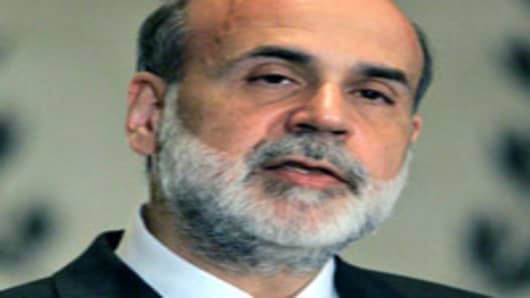The Fed's announcement was made in concert with the unveiling of other actions by the Bank of Canada, the Bank of England, the European Central Bank and the Swiss National Bank.
The Bank of Japan and Sweden's Riksbank also made statements.
"I haven't seen all the details of who's who and what's what but the important thing in their statement is that it was concerted. That's what was wrong with all their cuts last week
because it didn't seem to be concerted," said Nicole Elliott, technical analyst with Mizuho Corporate Bank in London.
But not everyone was happy.
Beth Malloy, bond market analyst at Briefing.com in New York, said: "I don't think we're going to buy it. It's just more short-term relief. Cutting the discount rate would have been a
more viable thing to do. It sounds like a diversionary tactic, like the Superfund and the whole mortgage hope thing."
Institutions in good standing that are eligible to borrow from the discount window can participate in the auctions, the first of which is scheduled for Monday, the Fed said. Four
auctions are scheduled in total, with more possible depending on how market conditions evolve.
The Fed said the temporary facility would allow it to inject short-term funds into strained markets through a broader range of counterparties and against a broader range of collateral than through its usual open-market operations.
The Fed said it would also establish foreign exchange swap lines with the European and Swiss central banks to ensure the availability of ample dollar funds in European markets.
The discount window allows banks to borrow money, usually on a short-term basis, to meet temporary shortages of liquidity caused by internal or external disruptions.
With banks highly reluctant to lend to each other in the money market, the gap between three-month Treasury bill yields and the three-month dollar interbank lending rate had jumped to around 220 basis points from about 50 in late July, before the credit crisis gripped global markets.
There are 100 basis points in a percentage point.
The Fed's Tuesday rate cut followed renewed deterioration in credit markets after major financial institutions around the world reported billions of dollars worth of write-downs due to
extensive exposure to delinquent risky mortgages.
Markets and policy-makers have been caught off guard by how hard and broadly rising defaults on U.S. subprime mortgages have hit. As roughly 1.8 million adjustable rate mortgages line
up for reset at sharply higher interest rates in 2008, the prospect of more pain for homeowners and banks has increased since the Fed last met in October.
The U.S. economy logged a sturdy performance in the third quarter, with growth clocking in at a 4.9 percent annual rate.
However, consumer spending has softened and a large overhang of unsold homes likely means any recovery in the battered housing market is some ways off. With home prices sliding and borrowing conditions tightening, many forecasters are warning the economy is skirting close to recession.
"Experience gained under the temporary program will be helpful in assessing the potential usefulness of augmenting the Federal Reserve's current monetary policy tools -- open market
operations and the primary credit facility -- with a permanent facility for auctioning term discount window credit," the Fed said.


